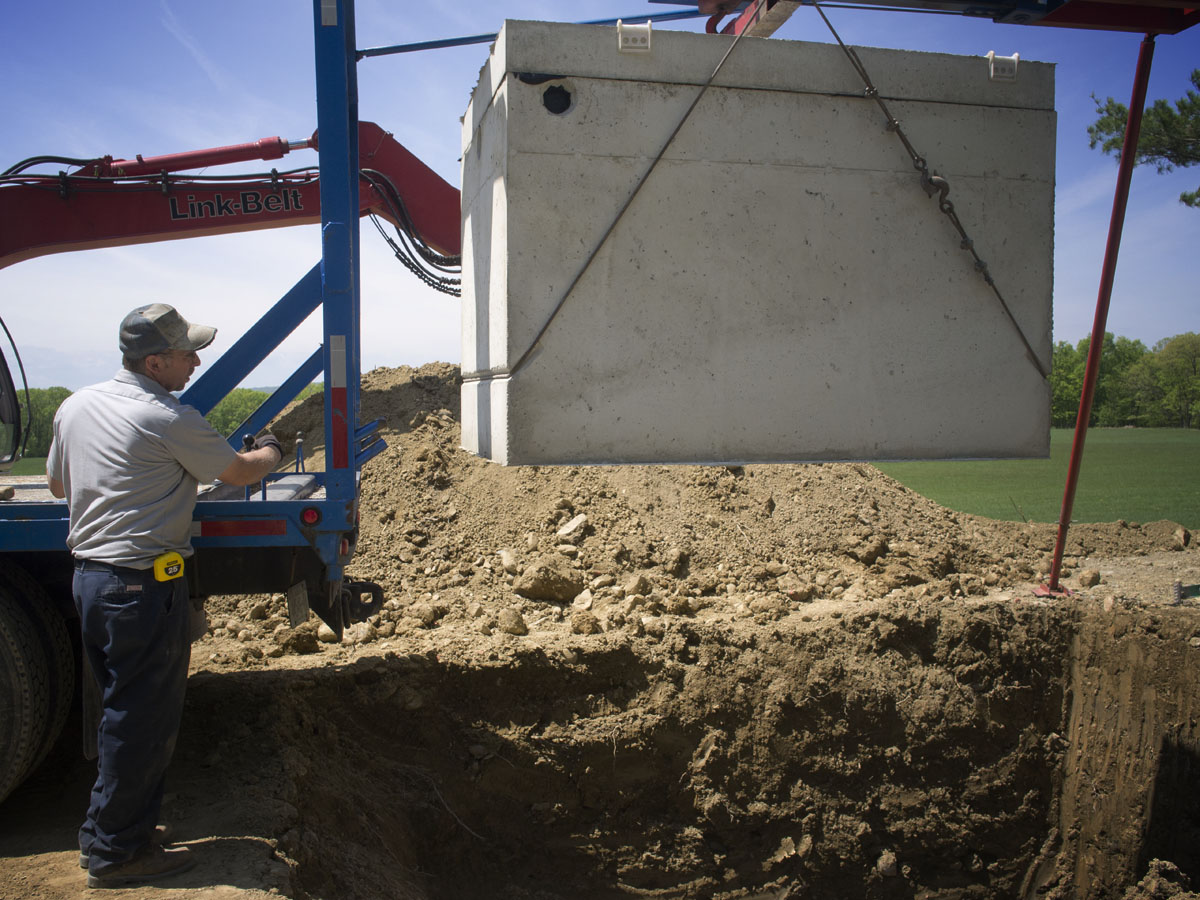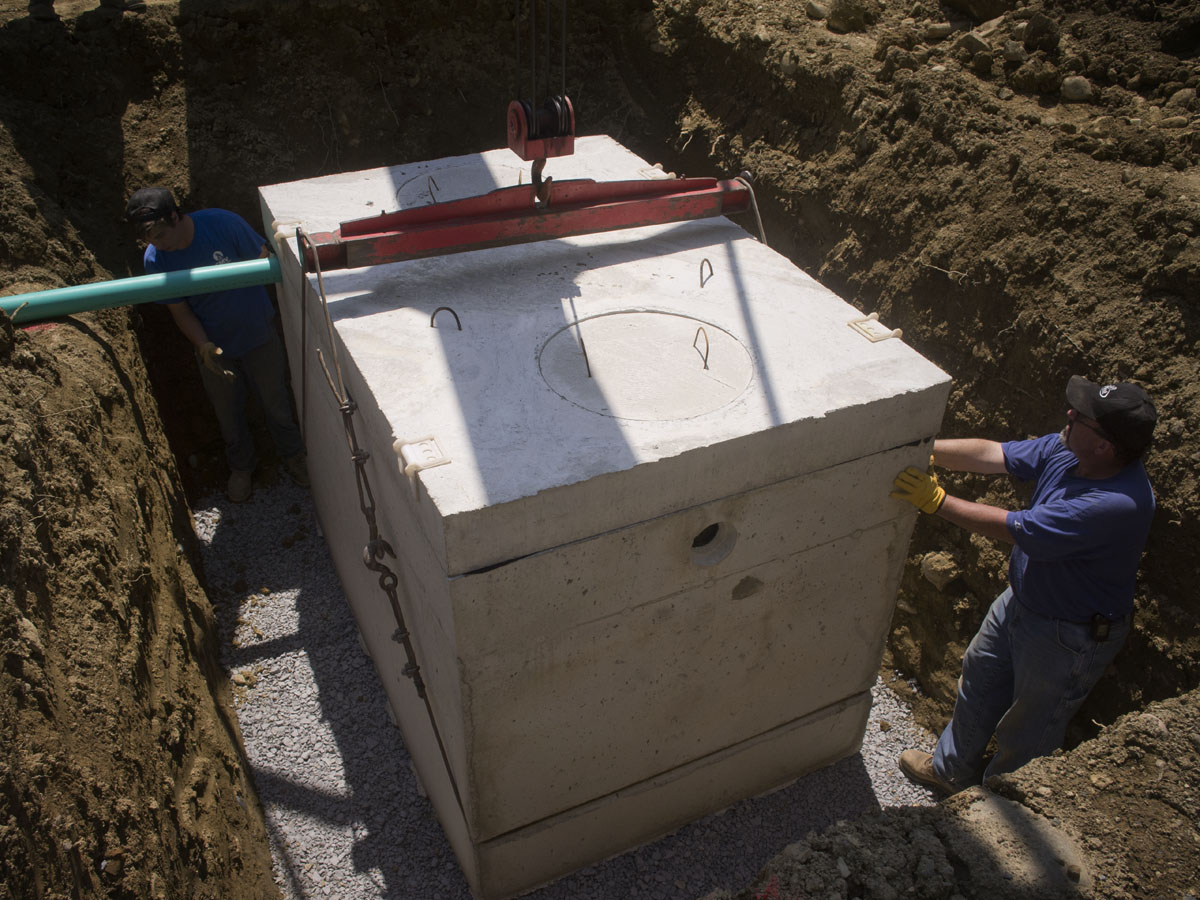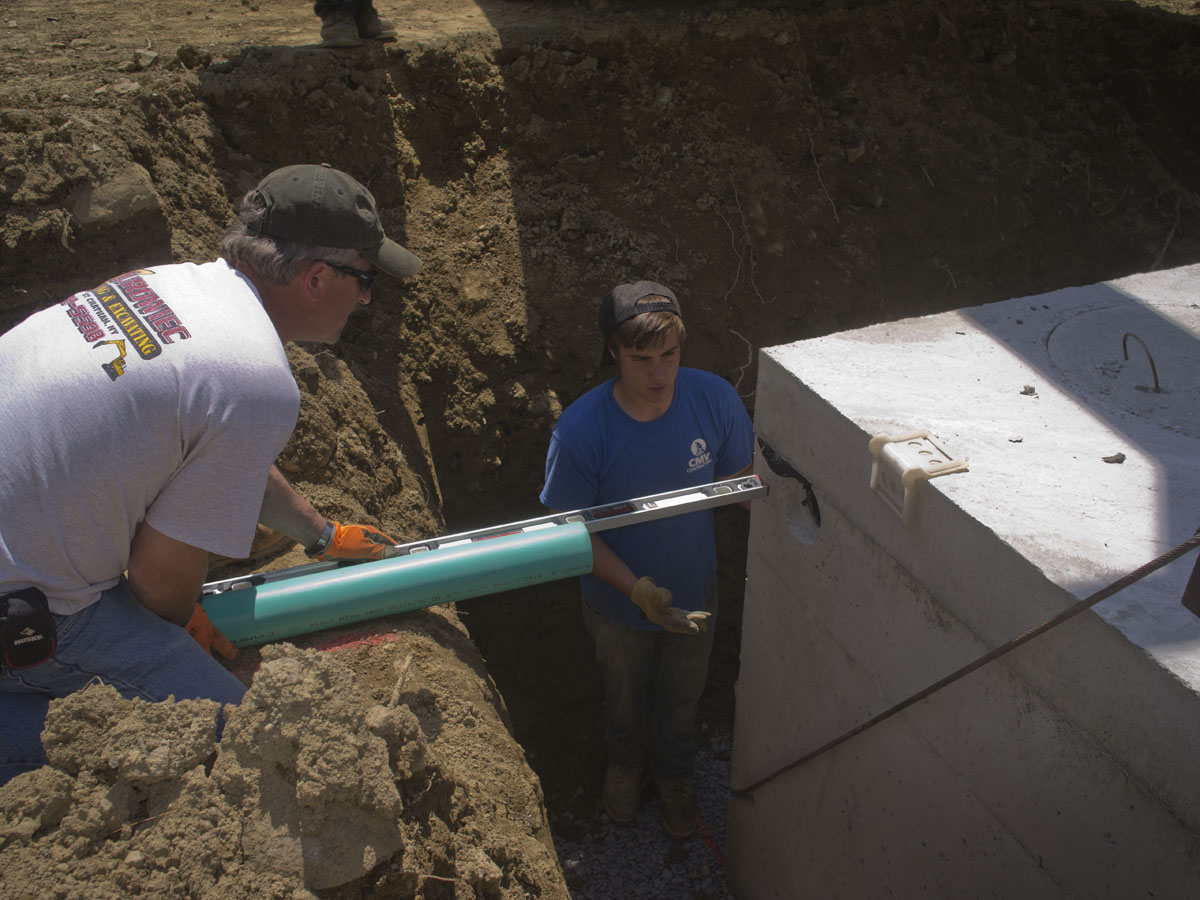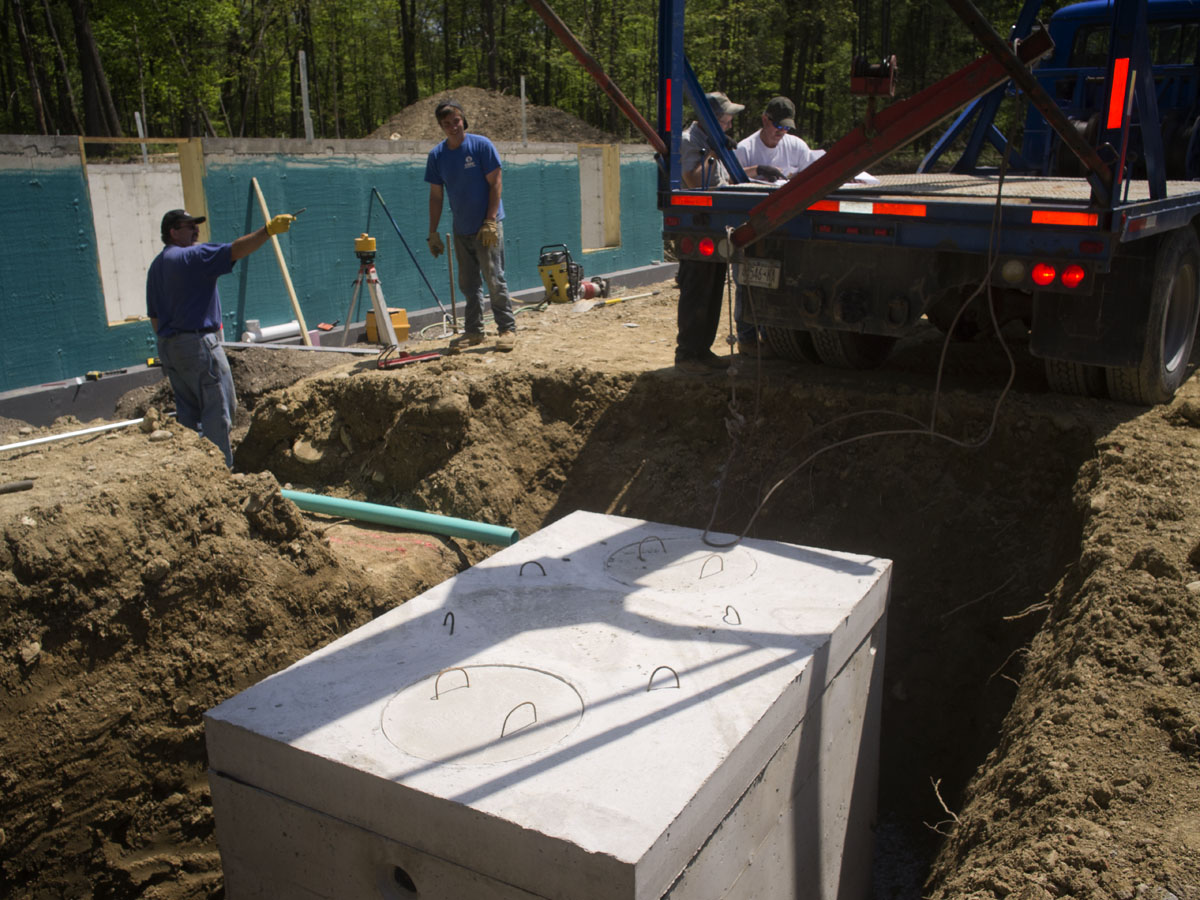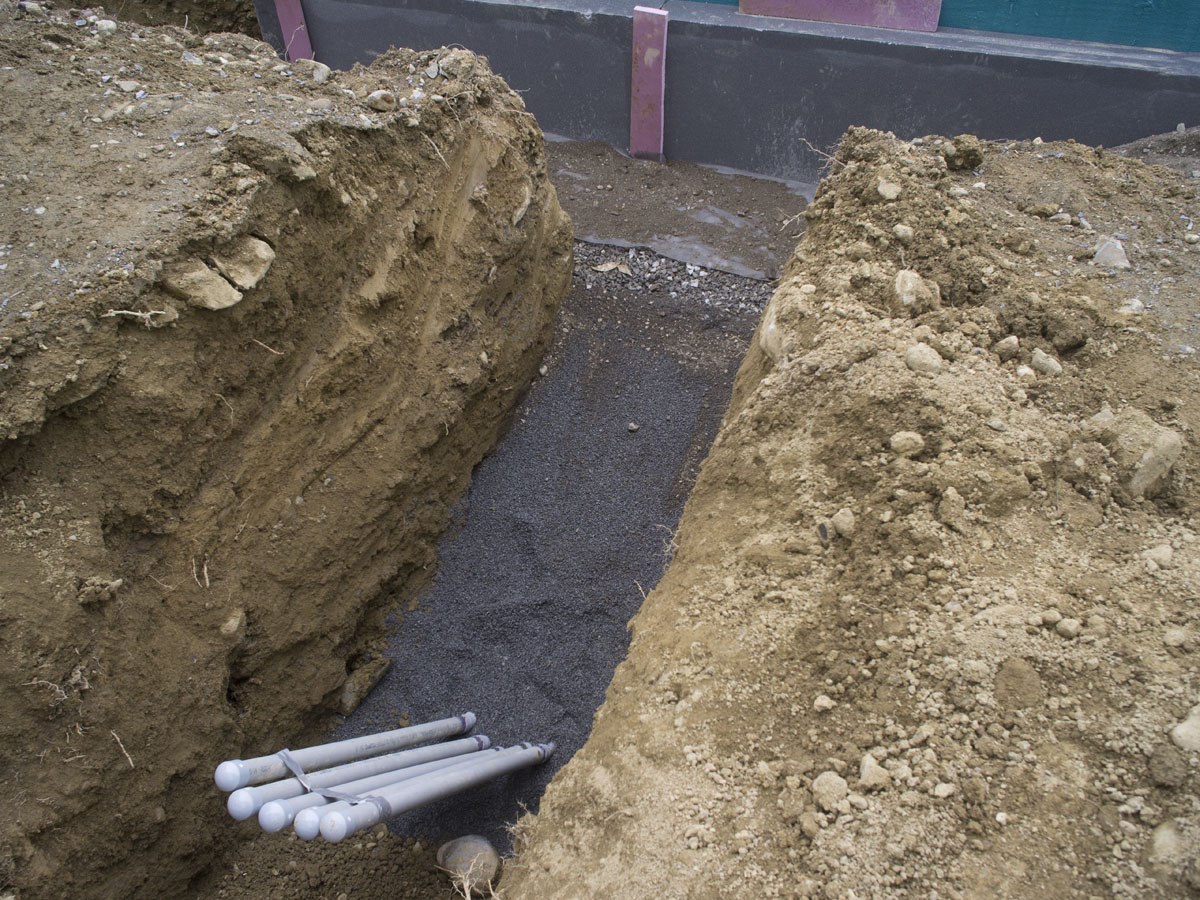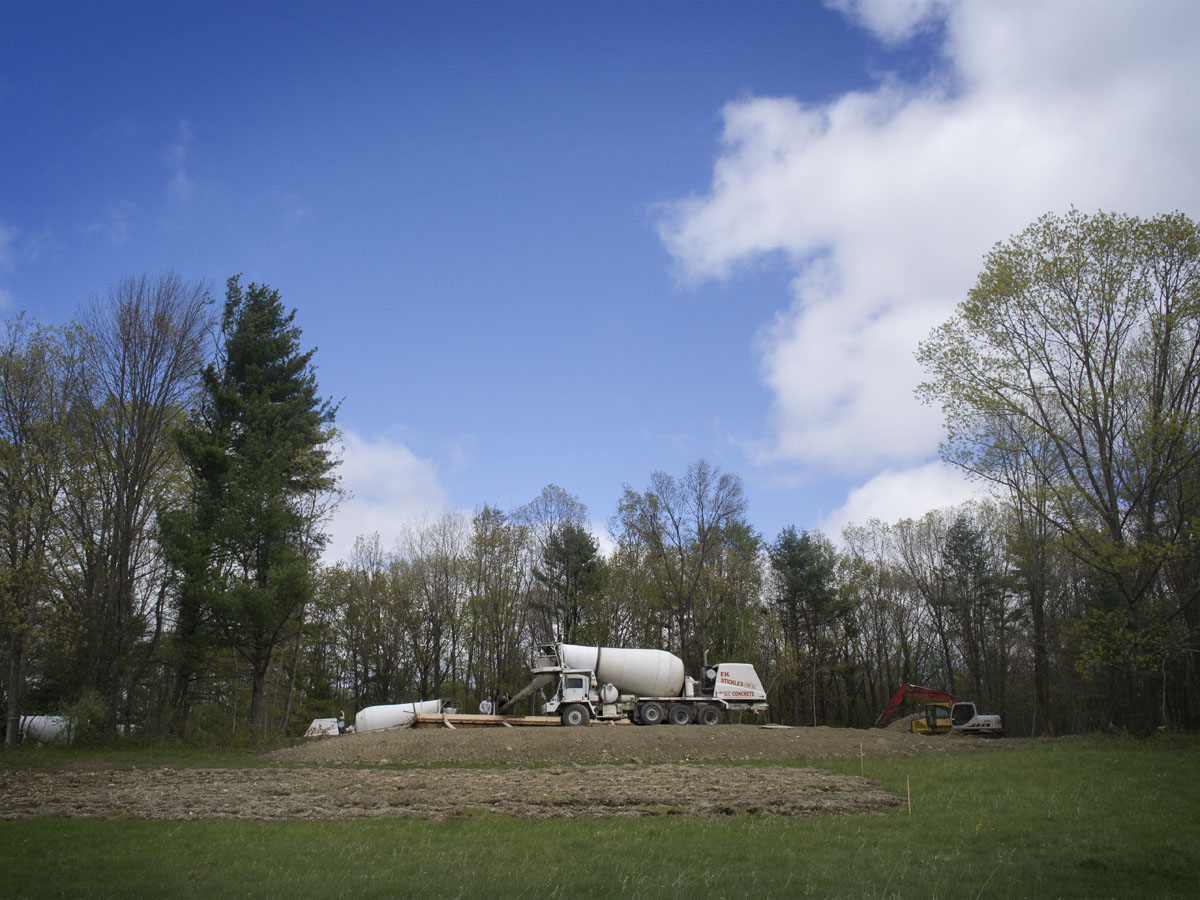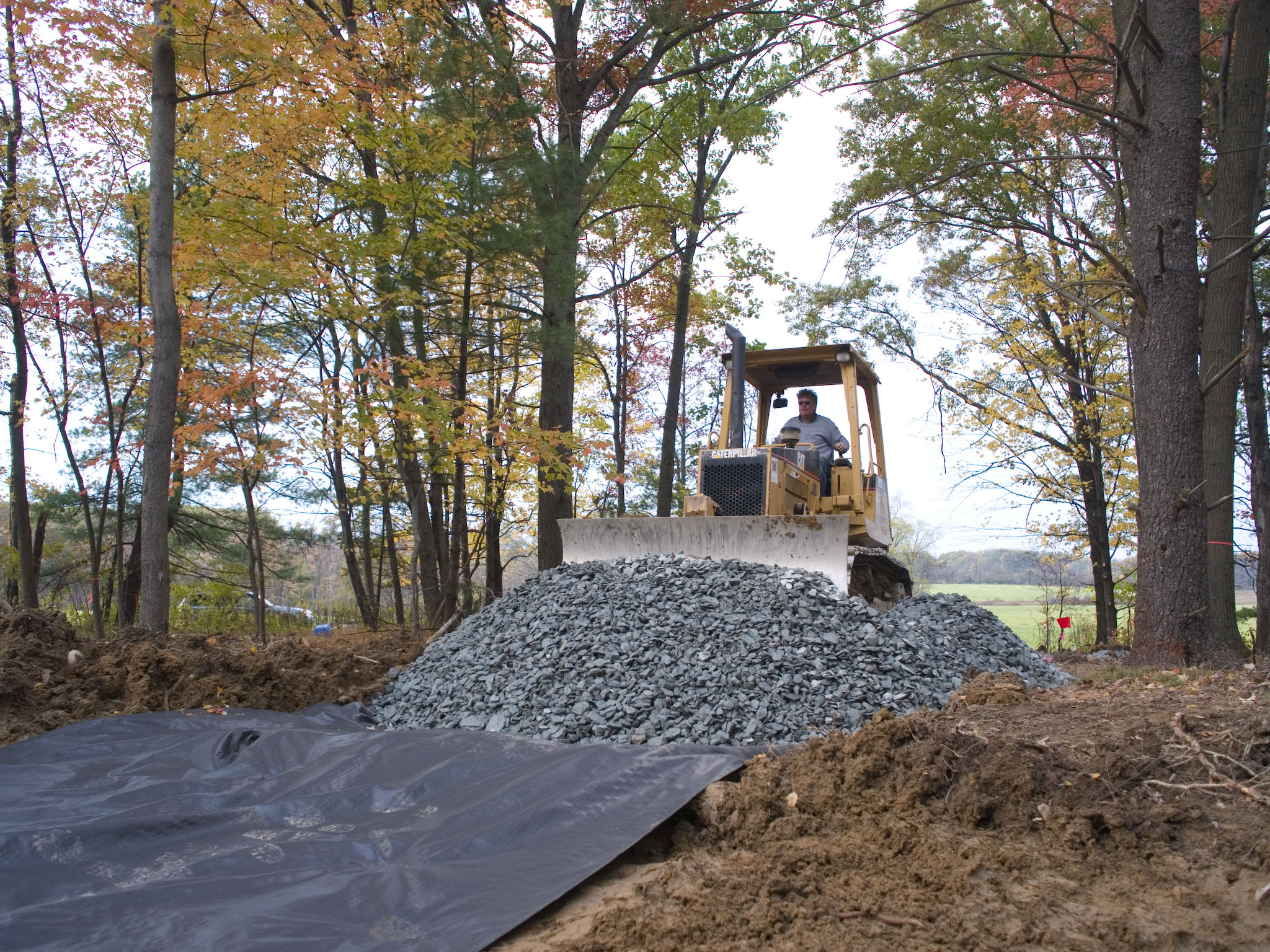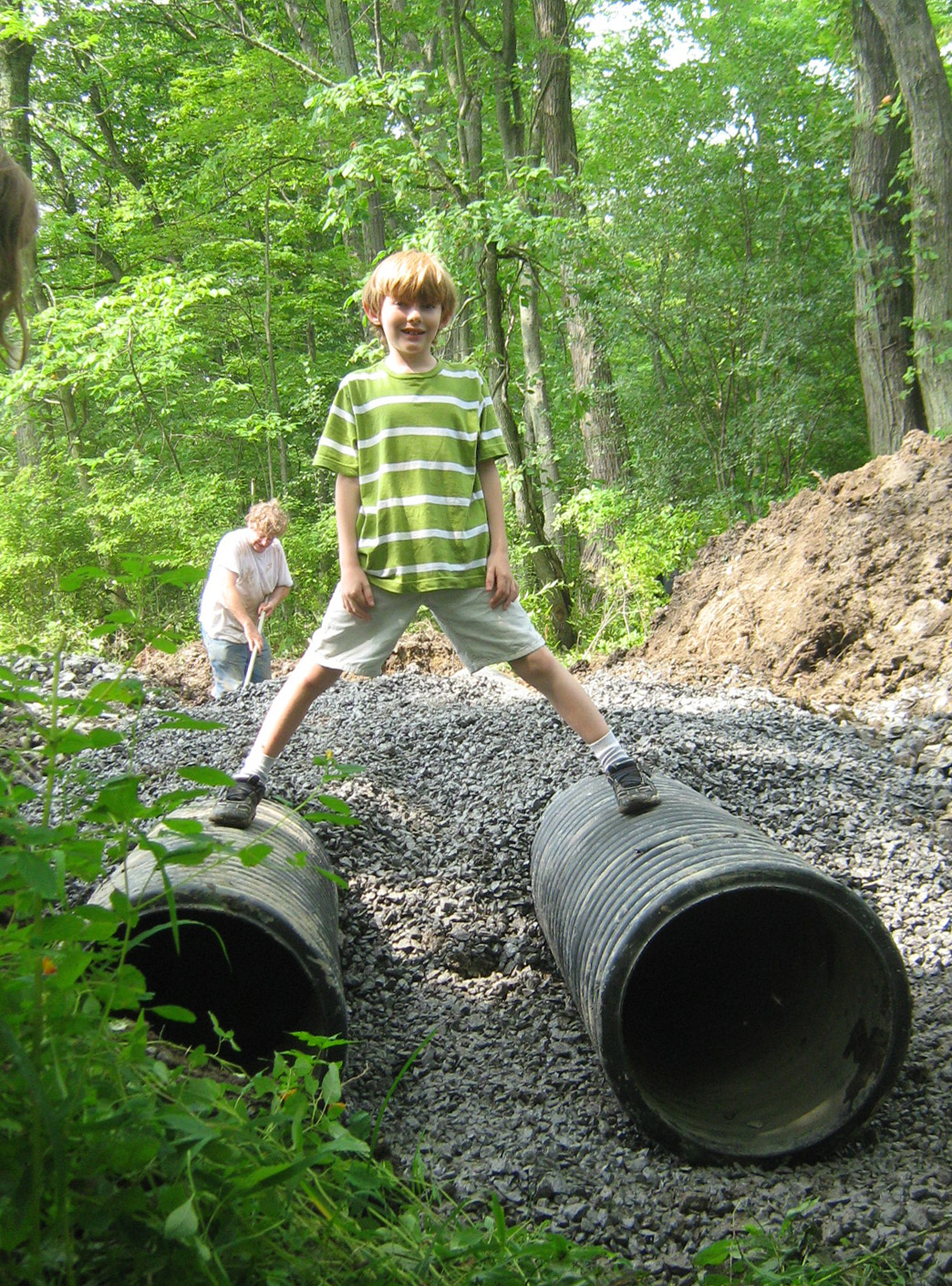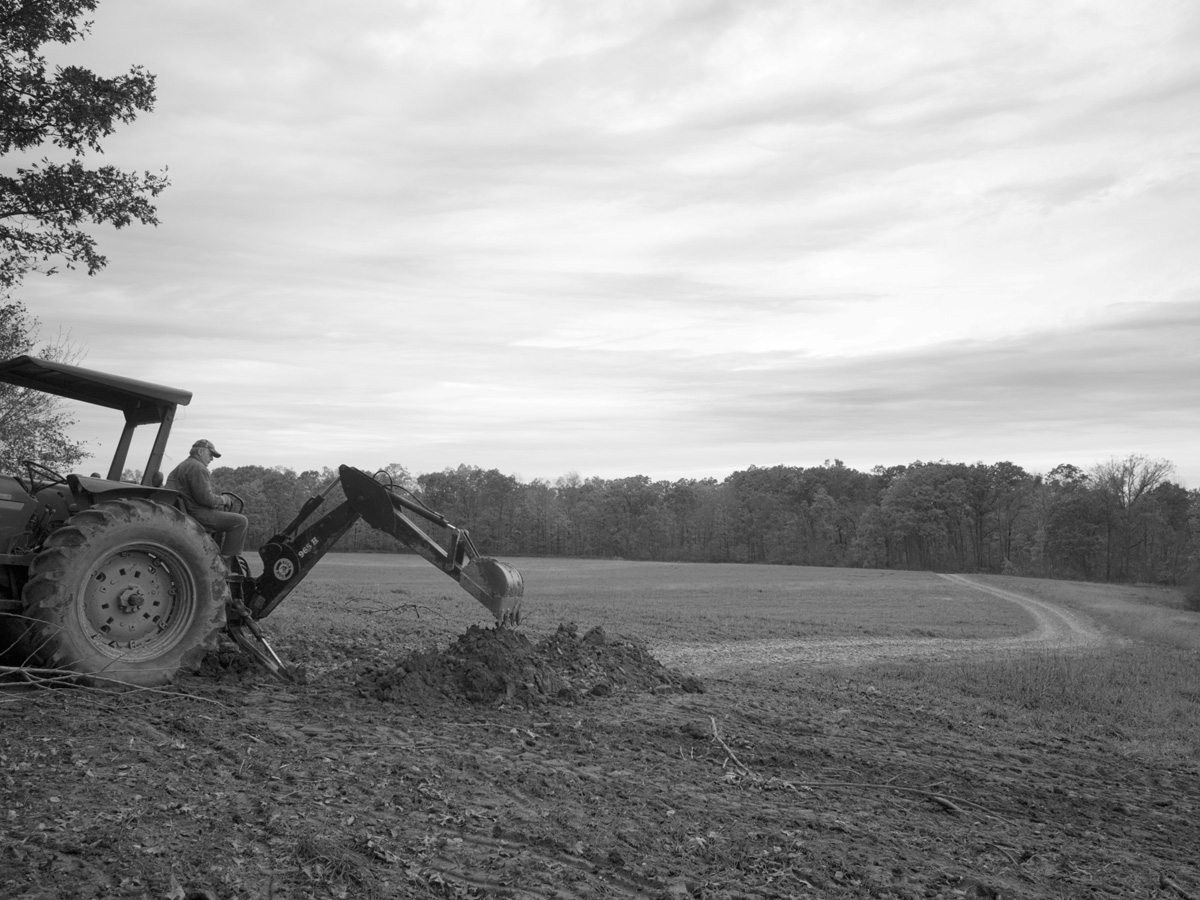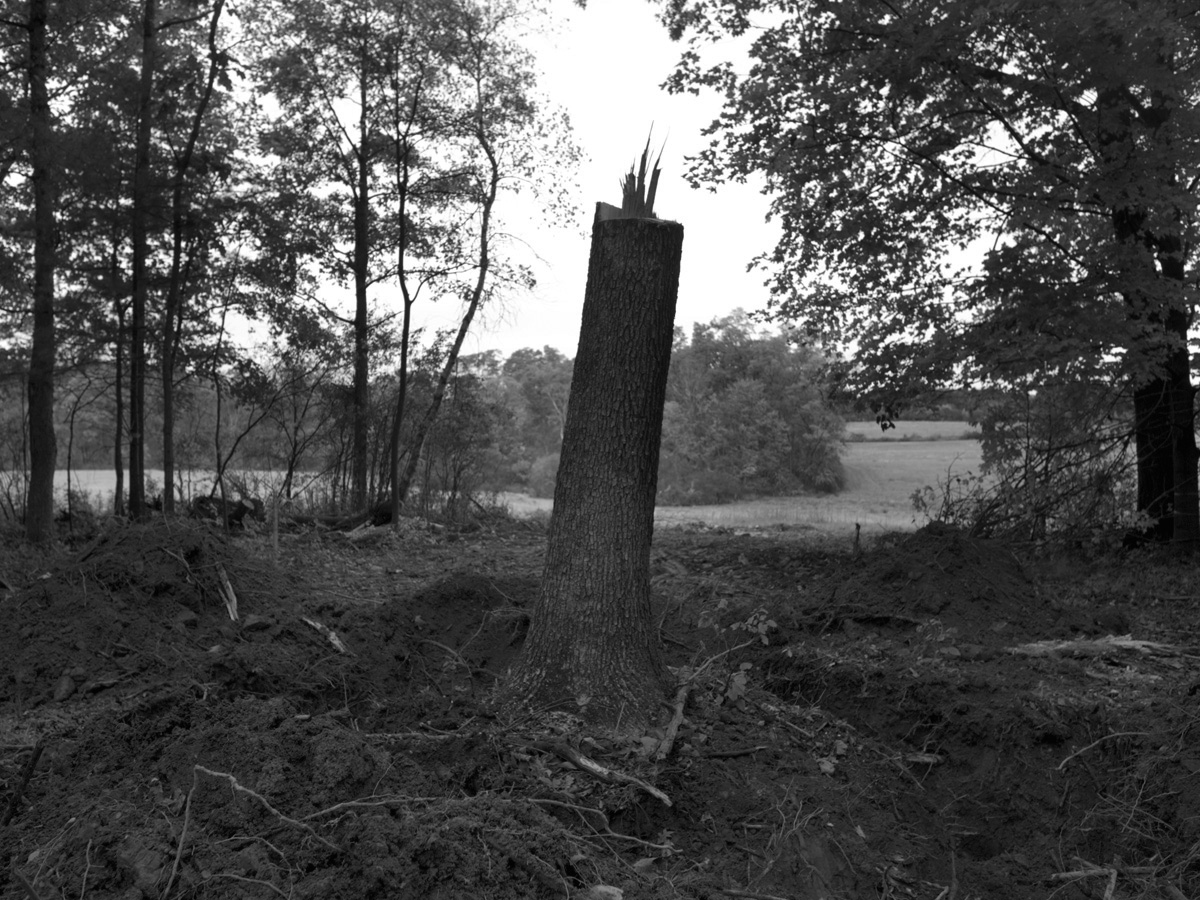Category Archives: 5. Site Development
Poking out from under
Looking East
The completion of DIY road construction
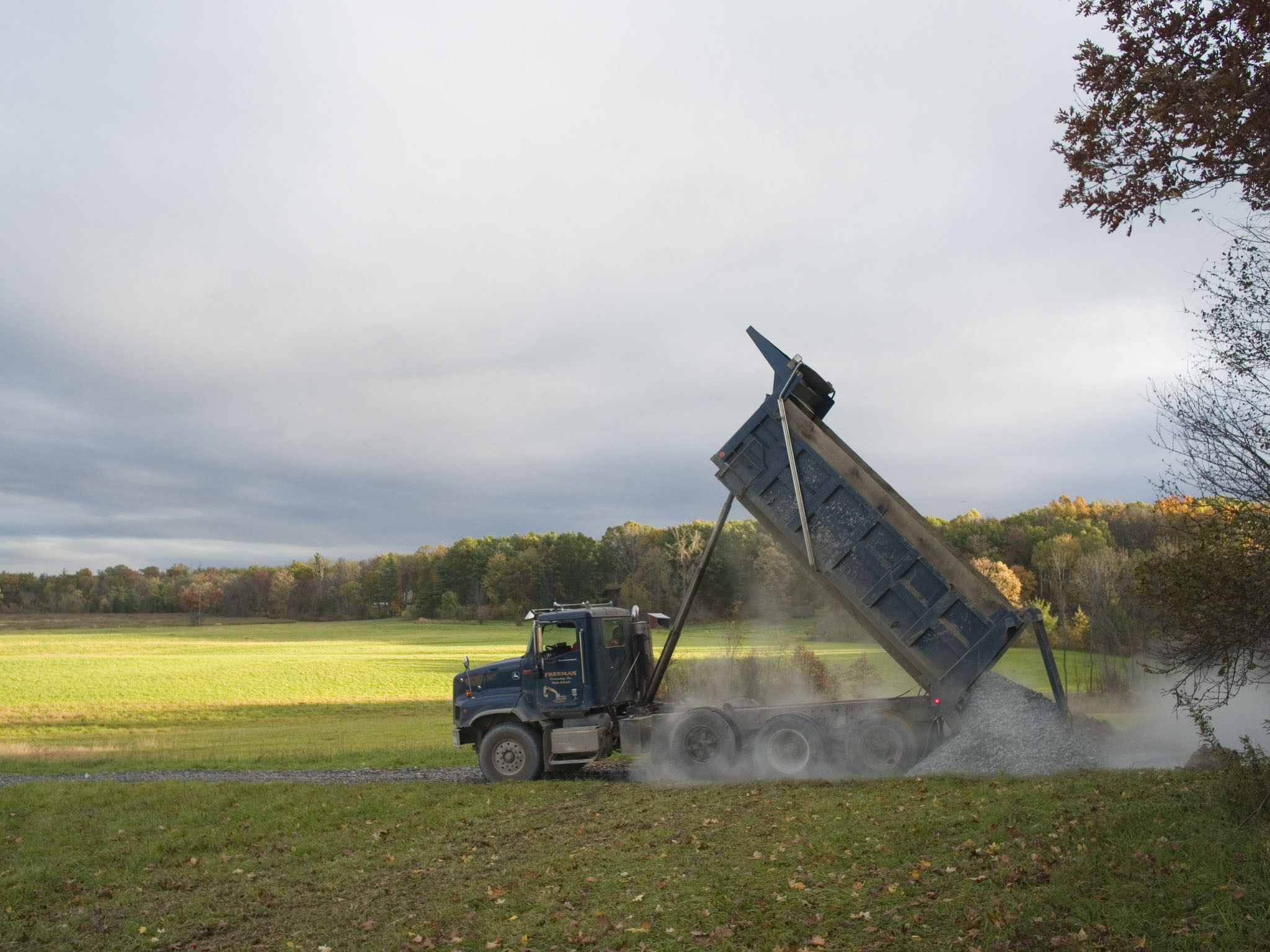 Troy Sand & Gravel delivering a load of stone. Each load weighs about 23 tons, and can cover about 60′ of road length.
Troy Sand & Gravel delivering a load of stone. Each load weighs about 23 tons, and can cover about 60′ of road length.
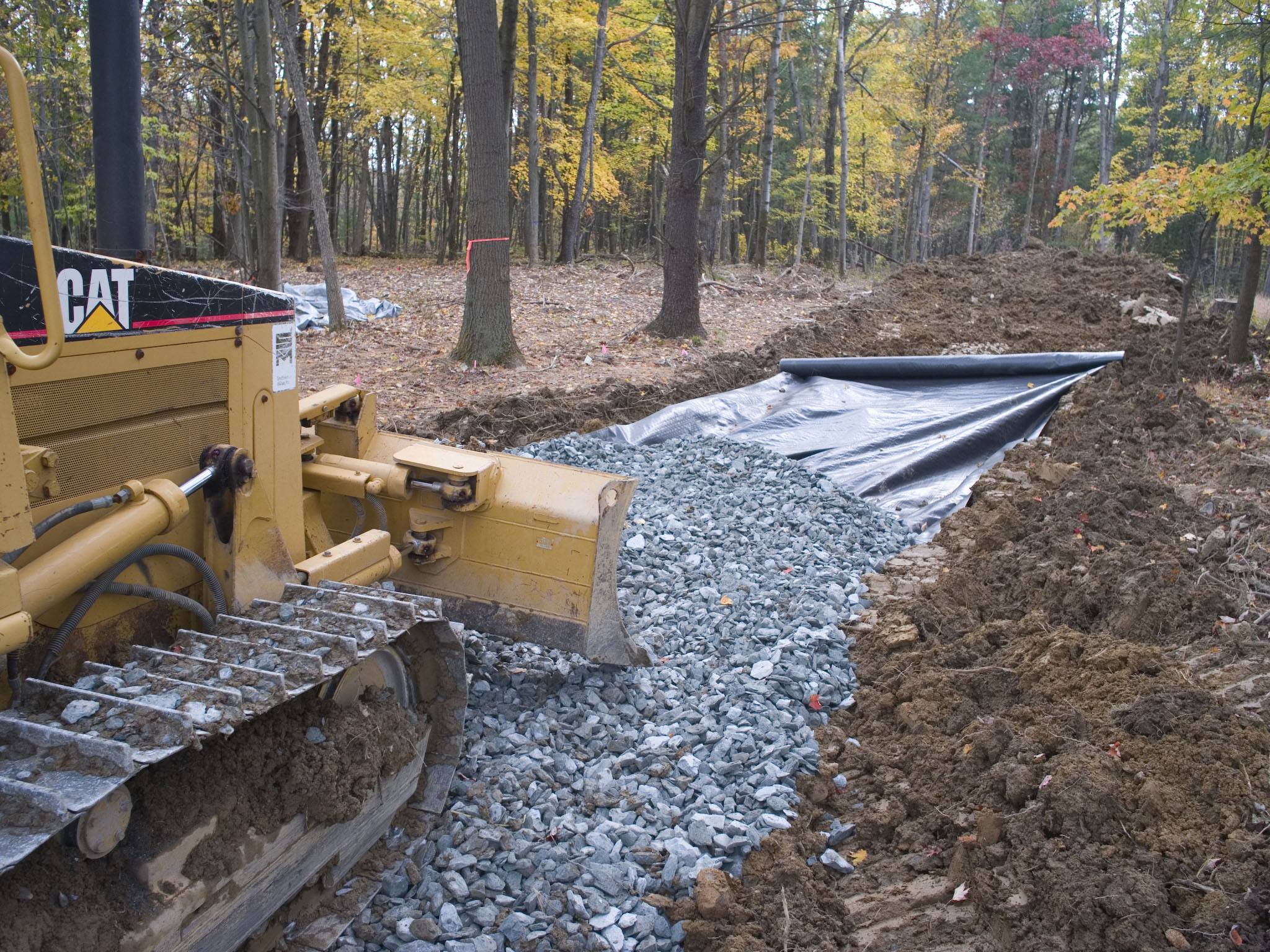 Pushing out the base stone on the highway fabric.
Pushing out the base stone on the highway fabric.
I rented a Caterpillar D-3 bulldozer from Mario’s hardware in Valatie. With a weight of 15,000 pounds, it is just heavy enough to scrape the top soil. It moves the stone into place easily.
The driveway is about a quarter of a mile long. We have finished the last 170′ of road leading up to the house site. We prepared the base by removing the topsoil and pulling the tree stumps. 12′ wide highway fabric is laid on the path followed by a layer of 3″ stone. A final layer of crusher run is laid on top. We’ve built a strong stable road on the wettest farm field in memory. Strong enough to carry the cement trucks and well-digging equipment to our building site.
Constructing a culvert, take one
Across the field and into the woods
Ted is my in-law and the farmer of the land. The road to the house site is 1,400 feet in length. It also crosses two culverts. I am building this road myself, with a great deal of help from Ted. His generosity of time, labor, knowledge and equipment is making this project possible. He is an artist with the backhoe. This photo was taken on his 75th birthday.
Clearing the road
Clay and a country song
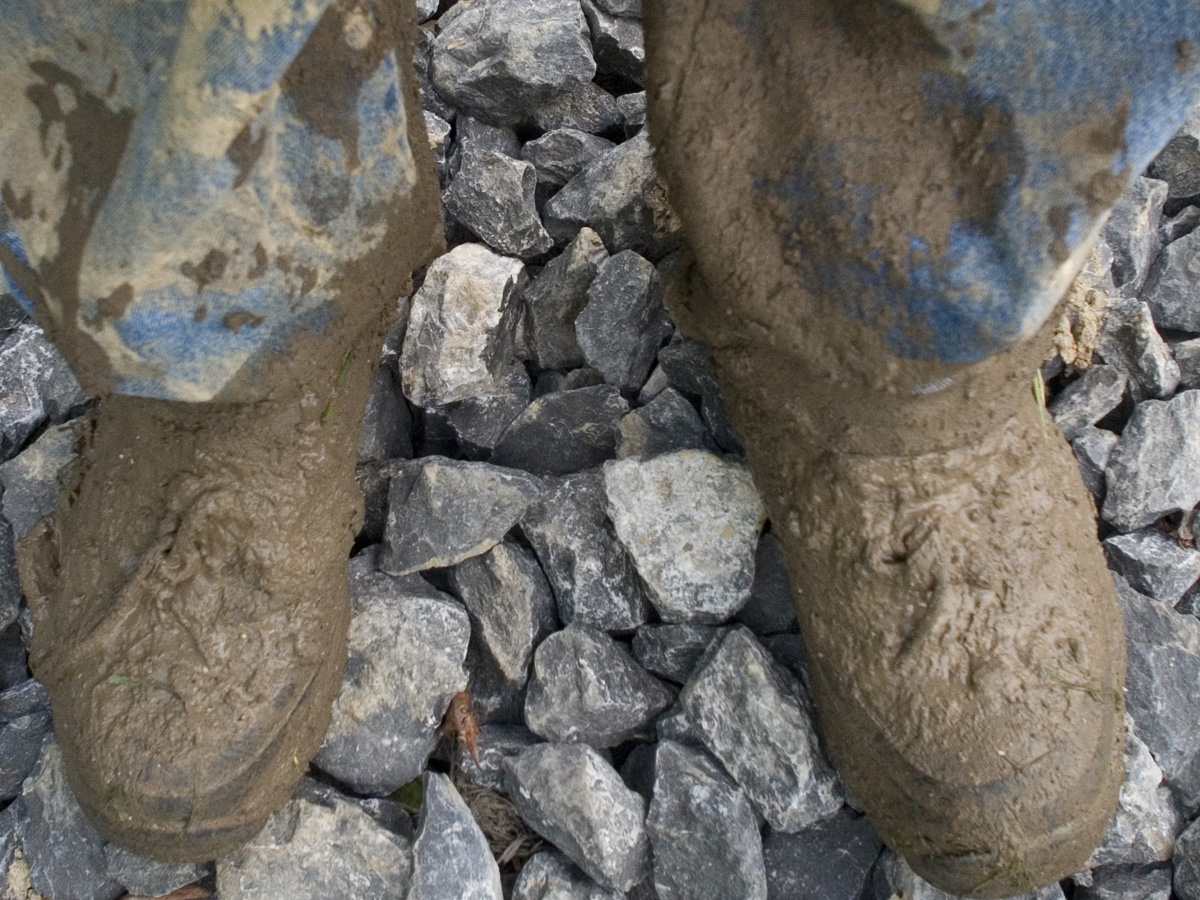 “My muddy boots, my city shoes, I found the note I wrote to you.” My life sounds like a country song. I am on a train from Hudson to New York City, calling Chris on my cell phone. “I found Dad’s tractor directions in my papers. Got a pen? Slip the clutch on the power take off, use the big hole on the hook up, and don’t pound the auger,” I say, relaying my father’s tips to my husband, who was recently granted permission to drive the John Deere on his own. Chris is digging yet more holes for a septic system percolation test.
“My muddy boots, my city shoes, I found the note I wrote to you.” My life sounds like a country song. I am on a train from Hudson to New York City, calling Chris on my cell phone. “I found Dad’s tractor directions in my papers. Got a pen? Slip the clutch on the power take off, use the big hole on the hook up, and don’t pound the auger,” I say, relaying my father’s tips to my husband, who was recently granted permission to drive the John Deere on his own. Chris is digging yet more holes for a septic system percolation test.
We are mired in mud. The soil is saturated from a month of record rainfall, including Hurricane Irene. The first set of perc test pits failed to drain fast enough for us to bury a septic system in the field. The next option, far less attractive both visually and financially, is a raised bed. Columbia County said we can use 18” of the soil and add several feet of sand and gravel to create a big mound. An excavator tells us we can fill and grade and make it blend; an architect warns our hillside will never look natural again. Septic systems range from $8,000 to $35,000 and may or may not involve pumps, sprayers and alarms – including the most unattractive idea of a receptacle in the basement that grinds solids and pumps fluids up and out.
Today Chris will make a last-ditch effort to see if we can bury a system in an alternate location. I will attend meetings and eat lunch at a Japanese restaurant, so I have slipped on my pumps instead of my boots, now coated and cracking clumps of clay.

